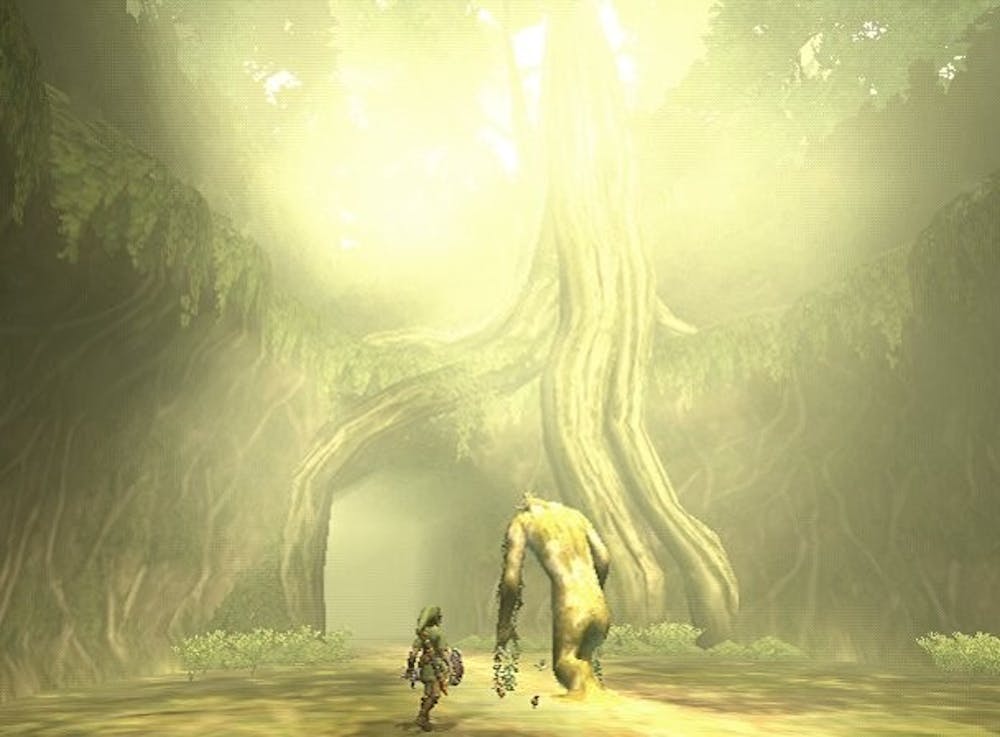My memories of video games growing up were mostly made up of being sorely beaten by my older brother or perpetually placing third in the annual Thanksgiving “Super Smash Bros. Melee” tournaments. When it came to video games, I was mediocre at best.
But I shrug it off because perhaps even more than gameplay, it has been video game music that has stuck me, as the former video game music built the foundations of video game music we hear today.
Nothing brings more nostalgic glee than the steadily marching tune of “The Legend of Zelda” Overworld theme, the jaunty “Pokemon Red and Blue” theme, and the cascading piano tones of “Aerith’s Theme” from “Final Fantasy VII” — songs that spring into my head at random moments even now.
I expect it was probably hard to imagine that the primitive voice synthesizers that bellowed “Long Live Gorf!” at people during arcade games of “Galactic Orbital Robotic Force” was among the forefathers of modern video game music. But it was the bleeps, bloops and pings of arcade noise that served as the primordial waters from which a genre was borne from.
And despite technological limitations of early NES consoles, the sawtooth wave sounds and chiptune noises of old video games precipitated not only a new music genre but one that bled into wide ranges of popular music in a way that we often overlook.
Japanese sound director Koji Kondo is likely the most well-known of video game composers. He is best known for his work with Nintendo, especially in “Mario” and “Legend of Zelda” games, much of which he says was influenced by Russian composer Sergei Rachmaninoff and rock bands Deep Purple and Emerson, according to Nintendo Power, a magazine published by Nintendo of America.
Kondo is also the subject of music theorist Andrew Schartmann’s book “Koji Kondo's Super Mario Bros. Soundtrack,” in which Schartmann argues Kondo’s work was just as “culturally and musically rich as any great album of the twentieth century.” He explains the intricacy behind the simplest of sounds effects, including Mario sliding down a pipe or hopping onto Yoshi's back.
In each one of Kondo’s tracks, from the lively, animated “Super Mario Brothers” Overworld theme to the eerie “Bowser’s Castle,” Kondo, like any other musical artist, blends harmony, rhythm and key to elicit an emotional response and create a new world.
Schartmann also explains how video game songs contrast and give each other context, which can be seen in the disparity between upbeat Overworld themes as players traverse brighter levels above ground and the dissonant musical negatives of Underworld themes when characters explore darker worlds hidden underneath.
As tempos flip from heart-palpitating tension to buoyant calm, video game music also mirrors the experience of the character and the player. Video game tracks are a powerful thing.
Kondo and composers Andrew Skeet, Austin Wintory, Yoko Shimomura and countless others have turned noise to music, Pac-man pings and 8-bit melodies into experimental artistic expression — one that has left a legacy in music beyond Nintendo and Sega and into the Top 40.
The Royal Philharmonic Orchestra, for example, has performed music from "Crash Bandicoot," "Final Fantasy" and "Resident Evil" in coveted venues like the Royal Albert Hall in London. Artists including Flying Lotus, Thundercat and the Pretenders owe some of their own musical success to the video game soundtracks they have been inspired by.
Paul McCartney, Hans Zimmer and Skrillex have all composed for video games. And video games like FIFA have soundtracks that showcase international artists from Jason Derulo and Pitbull to Kygo and Icona Pop. FIFA fans not only wait with bated breath for a new game to get their hands on but also to see what new musicians would play their tunes on the soundtrack.
Video games also marked the first time techno filled the ears of the masses. Arcade sounds influence genres including hip hop, electronic and pop — especially upbeat synth pop. Charli XCX’s “Boys,” Tessa Violet’s “Crush,” and “U Should Know Better” by Robyn and Snoop Dogg all have a characteristic video game flair, not to mention Kesha’s “Tik Tok” and much of the discography of Yellow Magic Orchestra.
The nostalgic bloops and bleeps of a seemingly bygone era built the foundations of the intelligent, experimental and artistic video game music of today and continue to influence popular music in ways that often go unseen. Without the chiptune blips and blops of video games past, techno, hip hop, electronic and synth pop would all be very different from the genres that make up popular music today.






